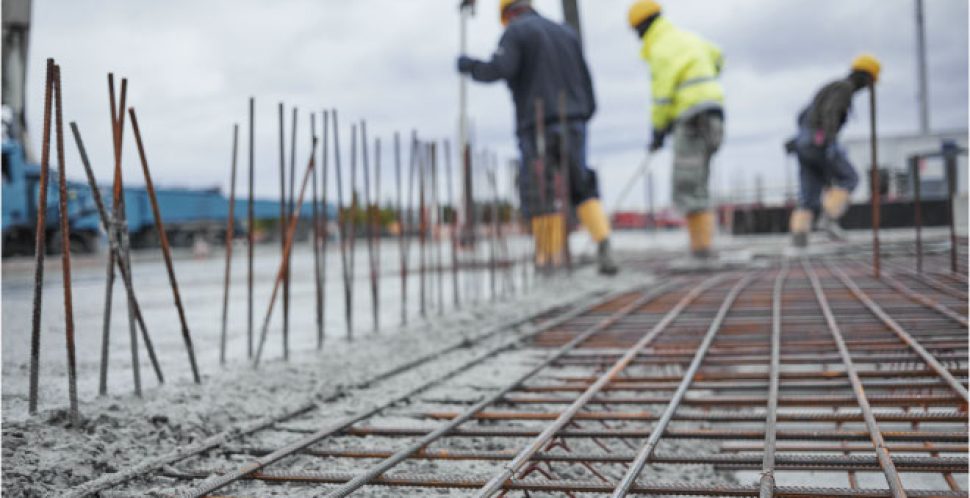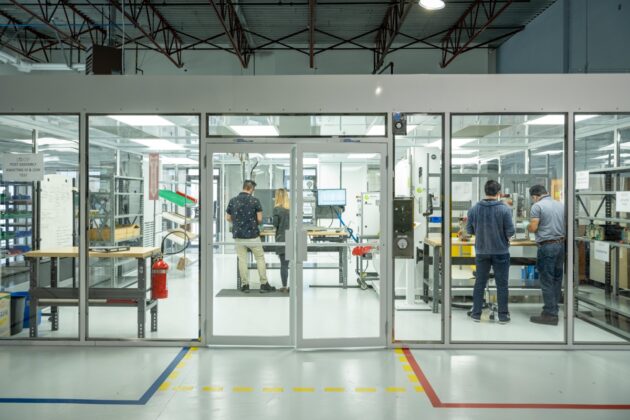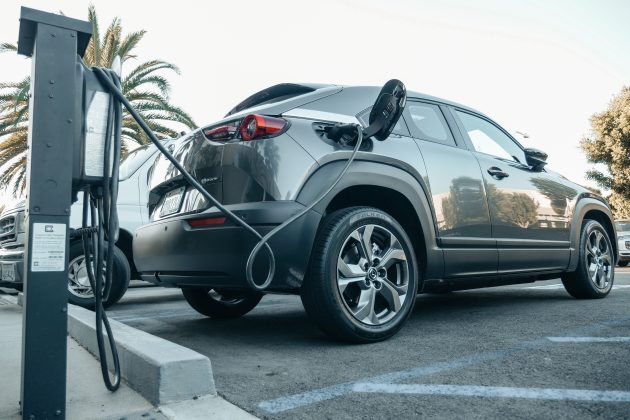Retrofitting the built environment represents one of the single largest emissions reduction opportunities in Vancouver and BC. Similarly, it is one of – if not the – largest opportunities for new wealth creation.
BC’s potential retrofit economy represents an estimated CAD$8.35 billion dollar market, and over 4,400 net direct full-time equivalent jobs between 2019 and 2039. This builds on the existing $3.3 billion market VEC identified for Metro Vancouver for new buildings from 2019 to 2030.
As Vancouver moves forward with developing the first climate-focused building retrofit regulation in Canada the opportunities are only going to grow. One of the core challenges in doing so, however, has always been the question of how to pay for it.
How will homeowners, needing to replace their natural gas boilers, but already struggling to make mortgage payments, deal with these new costs? How will large rental buildings integrate these needs into their existing replacement plans?
There’s one answer to this question that VEC and many in BC are particularly excited about: PACE financing.
What is PACE?
Property Assessed Clean Energy (PACE) financing is a way to invest in energy efficiency upgrades, disaster resilience improvements, water conservation measures, or renewable energy installations for residential, commercial, and industrial property owners. Since its inception in California in 2007, the PACE market in the United States has evolved steadily. There are two broad forms of PACE financing: residential (R-PACE), focusing on the single-detached housing market; and commercial (C-PACE), which is inclusive of all multi-unit residential (MURB) buildings, and a variety of institutional, commercial, and industrial building typologies with numerous variations in ownership and tenure.
Specifically, a Commercial PACE program uses the foundational construct of the lien-guaranteed loan, and orients that towards commercial, industrial and, in many US jurisdictions, non-profit and institutional owners.
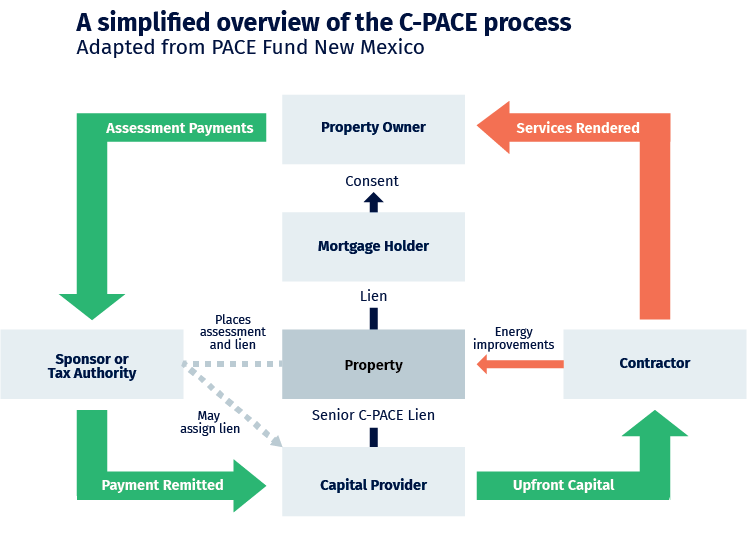
What does PACE do?
PACE financing, with its innovative payment system (i.e. through property taxes and not a separate bill) and low interest rates and payback period, provides several unique value-adds to many potential customers.
For commercial building owners, the framework of most C-PACE programs provides a number of key benefits, including:
- The ability to access long-term (often 25- or 30-year fixed-rates) financing at lower rates than mezzanine or preferred equity loans
- Non-Recourse Financing / No Personal Guarantees
- Transferrable upon sale of the property
- The ability to pass through the cost to tenants
- No operating covenant
- Funding for large percentages of the value of the building to be renovated (e.g. 25-50 percent)
About PACE in BC
VEC has been an active advocate for creating new forms of retrofit financing for Vancouverites and British Columbians. We believe BC needs a streamlined, strategic, and blended ecosystem of financing choices. An approach where consumers and businesses can bring together in-kind support (like free energy audits) and combinations of public and private money (e.g. grants and loans) will not only help us achieve our climate targets, but drive incredible economic benefits to both workers and homeowners.
The 2020 announcement by the Province of British Columbia that they would create a “PACE Roadmap for BC,” was in part influenced by VEC’s participation in the PACE BC advocacy coalition. VEC continues to work with PACE BC to support the creation of a strong and effective provincial program, and to explore the widest possible benefits from its use.
How PACE can help fund resilient buildings
In advancing advocacy work, VEC recognized that we needed to further explore PACE’s effectiveness in improving resilience and climate adaptation. This is especially relevant given Vancouver’s ongoing seismic preparation work and a forthcoming provincial climate adaptation strategy. In 2020 VEC conducted a survey of PACE programs in the United States and how they can simultaneously can greenhouse gas (GHG) reductions, but also resilience investments, such as flood protections and seismic event preparedness.
Over the course of the study, VEC found that:
- PACE financing programs in many US jurisdictions now include a wide range of climate mitigation, adaptation, and other resilience measures.
- C-PACE is increasingly used to bundle together both mitigation and resilience measures, saving building owners time and money; and, in some cases, helping preserve rental stock and keep non-profits and other institutions financially stable through more affordable credit.
- While uptake is still proportionally small (seven percent of total PACE loans in the US), interviewees foresee strong growth in resilience-inclusive C-PACE financing in the future, especially in response to new and forthcoming retrofitting regulations.
- Most program administrators, capital providers, and other actors advise avoiding overly prescriptive and conservative program designs to ensure a smooth customer experience while still providing consumer protections for building owners.
To learn more, access the VEC study:
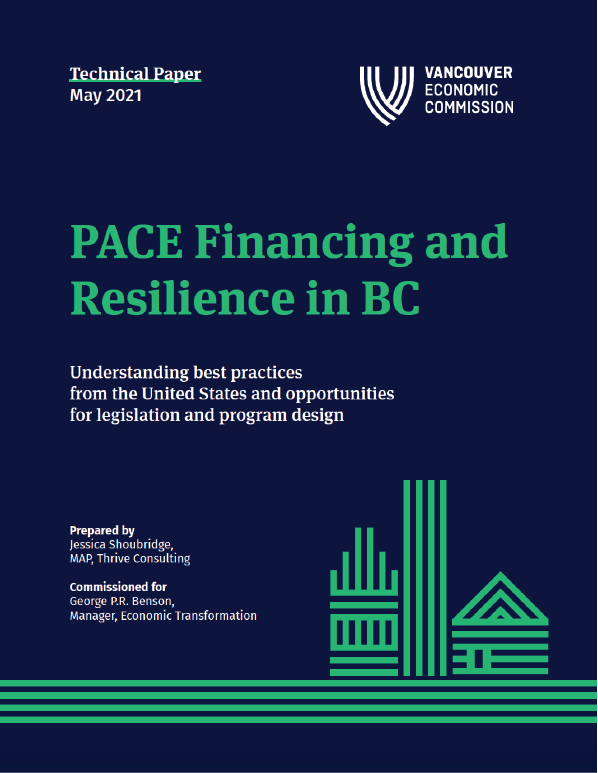
PACE Financing and Resilience in BC
Understanding best practices from the United States and opportunities for legislation and program design
This technical paper reviews best practices Commercial Property Assessed Clean Energy (C-PACE) programs throughout the US and how they are being leveraged to address resilience challenges in the built environment.
